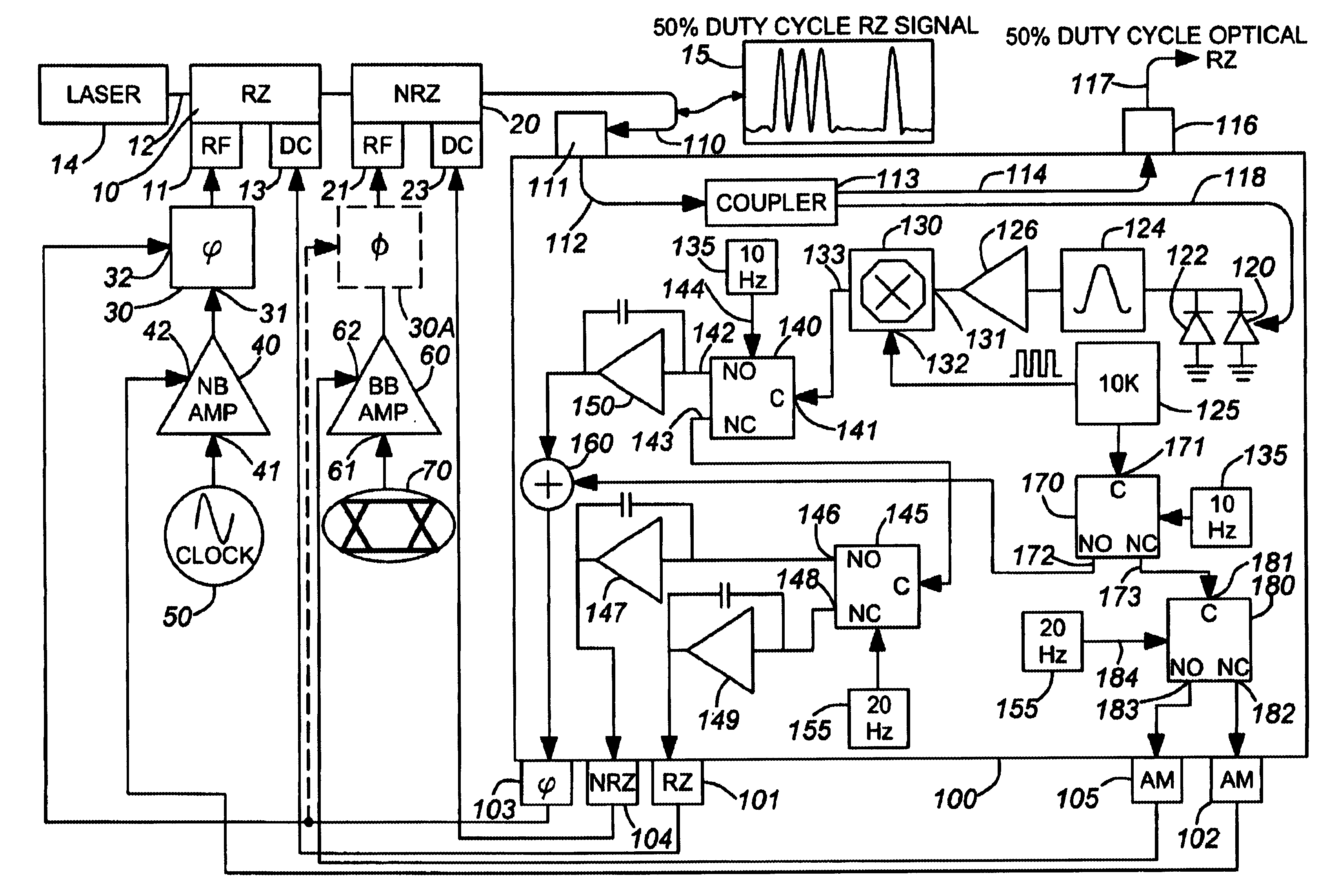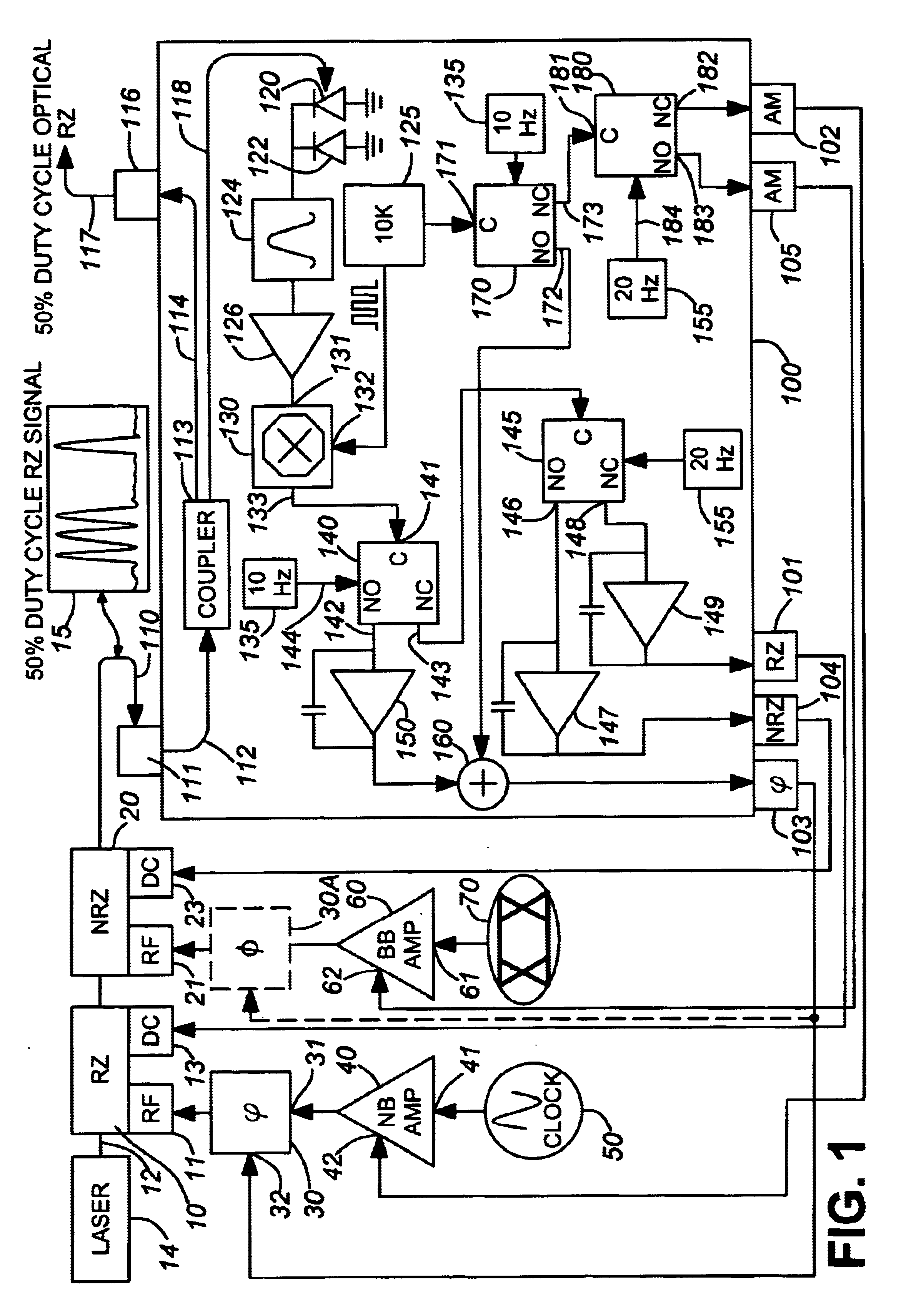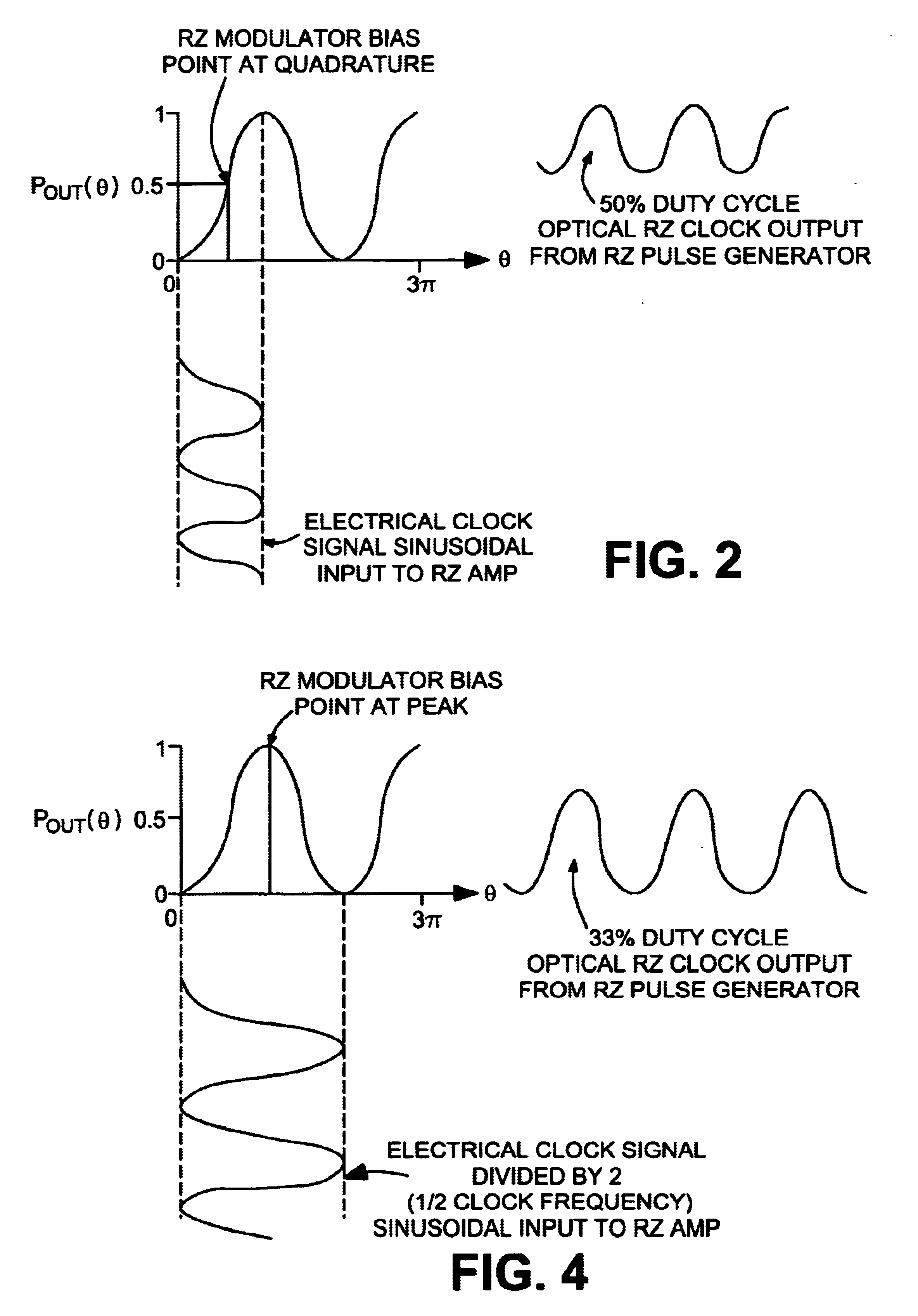Cascaded RZ and NRZ laser modulators having RZ/NRZ phase alignment bias control
a laser modulator and phase alignment technology, applied in the field of optical communication systems, can solve the problems of complex hardware for implementing an rz external transmitter, such as long haul, high bit rate fiber communication, etc., and achieve the effect of reducing costs
- Summary
- Abstract
- Description
- Claims
- Application Information
AI Technical Summary
Benefits of technology
Problems solved by technology
Method used
Image
Examples
first embodiment
[0017]the cascaded RZ / NRZ digital optical transmitter of the present invention, which employs RZ quadrature bias control and phase alignment of the RZ and NRZ RF signals applied to respective RZ and NRZ modulators is diagrammatically shown in FIG. 1. In this embodiment, the RZ modulator is biased at its transfer function half power point, resulting in an RZ duty cycle of 50%. This larger duty cycle may be preferred in applications where wider RZ pulses are desired.
[0018]Regardless of the biasing control mechanism used, the modulator architecture of each embodiment of the invention comprises a pair of external modulators 10 and 20, which are optically cascaded in the output beam path 12 of a continuous wave laser 14, so as to produce the desired RZ-modulated digital data stream. As a non-limiting example, each of modulators 10 and 20 may comprise an X-cut lithium niobate (LN) Mach Zehnder (MZ) modulator. The relatively upstream modulator 10 serves to modulate the CW laser with a sinu...
third embodiment
[0040]FIG. 5 diagrammatically illustrates the cascaded RZ / NRZ digital optical transmitter of the present invention which employs a modified implementation of the RZ quadrature bias embodiment of FIG. 1, to control the differential phase between the RZ and NRZ RF signals applied to respective RZ and NRZ modulators. As in the embodiment of FIG. 1, the RZ modulator is biased at the mid point of its transfer function, as shown in FIG. 4, so as to realize an RZ duty cycle of 50%. Again, those components of the architecture of the embodiment of FIG. 5 that are the same as in the embodiment of FIG. 1 will not be redescribed here.
[0041]The architecture of FIG. 5 differs from FIG. 1 by simultaneously applying two dither signals to the RZ and NRZ modulators, each having the same modulation index (which may be achieved through manual calibration of the modulator set-up, or automatically (under the control of a transmitter system processor)). Also, the resultant phases of the two optical dither...
PUM
 Login to View More
Login to View More Abstract
Description
Claims
Application Information
 Login to View More
Login to View More - R&D
- Intellectual Property
- Life Sciences
- Materials
- Tech Scout
- Unparalleled Data Quality
- Higher Quality Content
- 60% Fewer Hallucinations
Browse by: Latest US Patents, China's latest patents, Technical Efficacy Thesaurus, Application Domain, Technology Topic, Popular Technical Reports.
© 2025 PatSnap. All rights reserved.Legal|Privacy policy|Modern Slavery Act Transparency Statement|Sitemap|About US| Contact US: help@patsnap.com



